Dollar Falls, Gold Rallies, Stocks Wary
By Colin Twiggs
September 26, 2007 4:30 a.m. ET (6:30 p.m. AET)
These extracts from my trading diary are for educational purposes and should not be interpreted as investment advice. Full terms and conditions can be found at Terms of Use.
Interest Rates
The subprime crisis has had little impact on bank credit, with total credit edging upwards, but the real impact has been outside the banking system, where the $2 trillion commercial paper market has contracted by almost $300 billion.
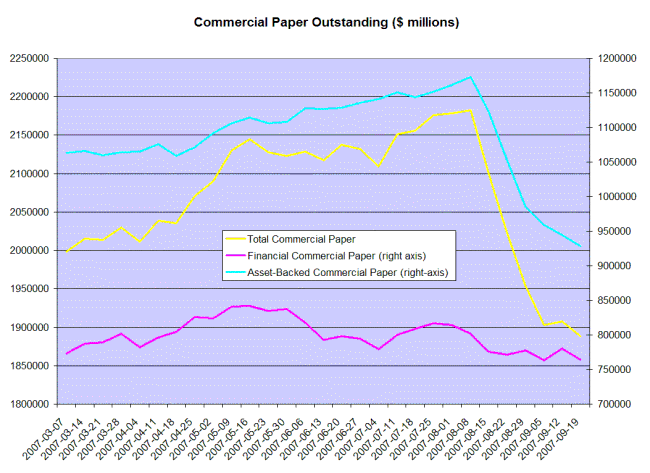
Contracting credit and declining real estate investment are likely to have a dampening effect on the economy. Whether this leads to recession — or merely a "near recession experience", with GDP growth declining to around 1% according to UCLA Anderson Forecast — is open to question.
We normally look to the stock market for guidance, as the index acts as a synthesis of all prevailing views, but we are approaching fund managers' quarter-end in four days time and the market may be subject to distortion until then. It may be a good idea to sit on the fence — at least for equities — until after September 30.
Gold
Gold continues to benefit from the depreciating dollar. Spot gold is consolidating at resistance at the 2006 high of $730. Expect gold to appreciate further if the US dollar index continues to fall.
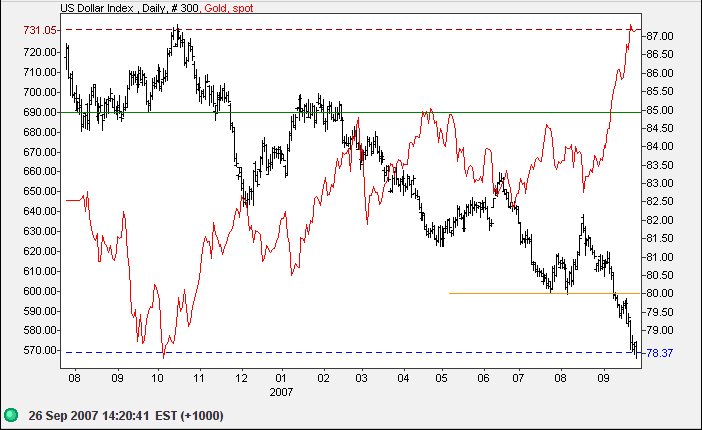
Source: Netdania
Crude Oil
December Light Crude retreated after a failed breakout above the August 2006 high of $80. Expect a test of support at $76/barrel; respect (of support) would signal that crude remains in a strong up-trend.
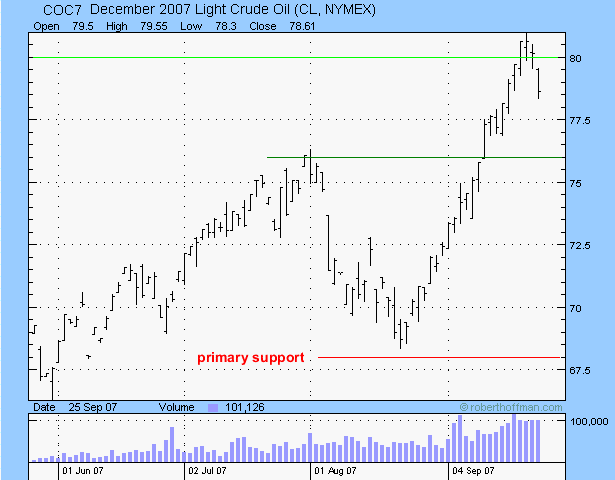
Currencies
The euro continues in a primary up-trend against the dollar. Expect a retracement to test support at 1.3850. Breakout above the trend channel would warn of an accelerating up-trend.
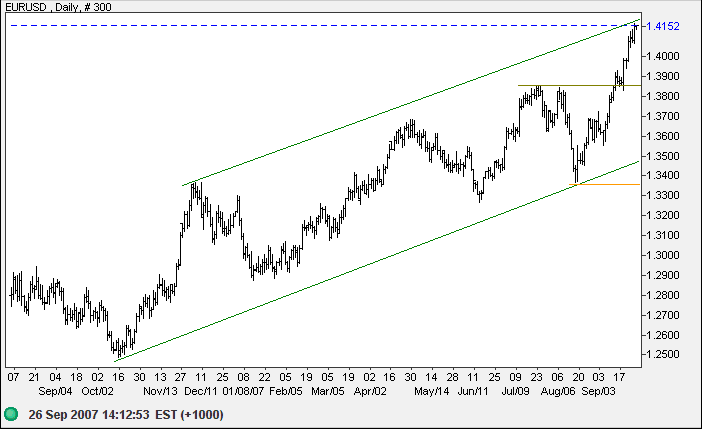
Source: Netdania
The dollar has formed a symmetrical triangle against the yen. Future trend direction will be indicated by the direction of a breakout.
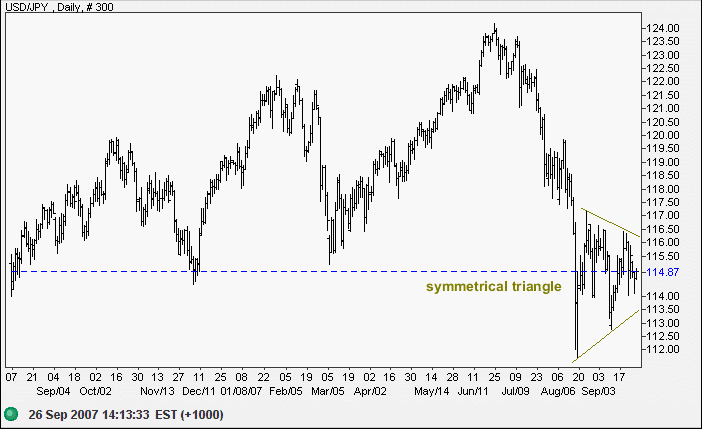
Source: Netdania
The Australian dollar is headed for a test of resistance at $0.89 against the greenback. The RBA is unlikely to follow the Fed in cutting interest rates, so expect the Aussie to strengthen further. Breakout above $0.89 would suggest that parity is an achievable (long-term) target.
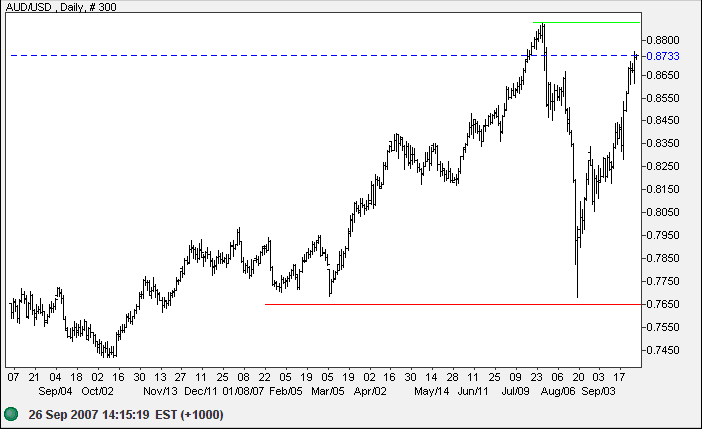
Source: Netdania
Treasury Yields
Ten-year treasury yields recovered to above 4.50%, the falling
dollar forcing some offshore investors to withdraw from the
bond market. Yields are moving sideways, with no clear trend.
Further dollar weakness would cause yields to rise.
The yield differential (10-year minus 13-week treasury yields)
is also rising, easing pressure on bank margins. However,
concern over tightening credit continues, especially in the
commercial paper market.
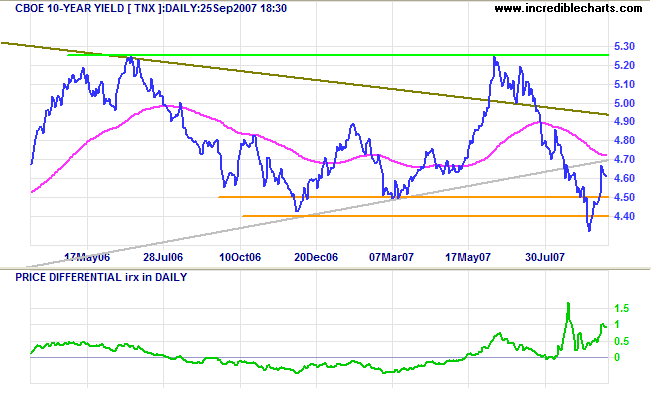
The fed funds rate is matching its target of 4.75%, but short-term (3-month) treasury yields remain at a substantial discount to commercial paper yields. The risk premium of 130 to 150 points (normally 25 to 50 points prior to August) reflects a highly risk-averse financial market.
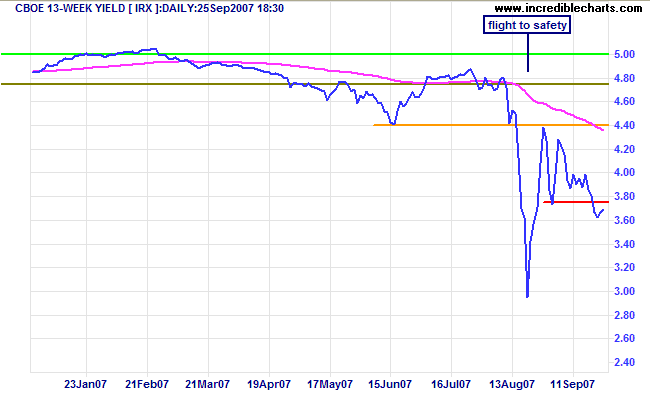
Asset-backed commercial paper yields have eased to around 5.25%, but remain at a premium to the fed funds rate which they previously followed.
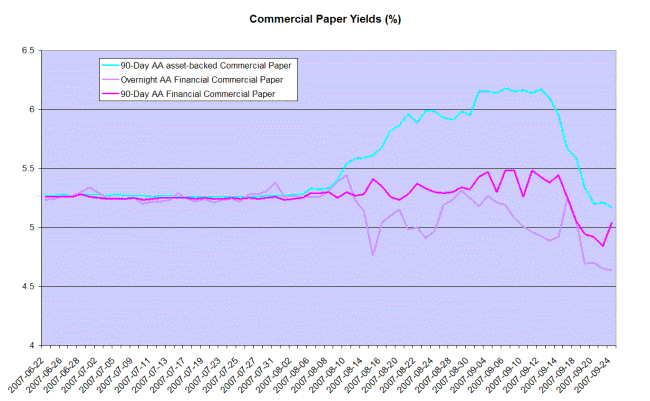
Stock Markets
The Dow Jones Industrial Average is consolidating below resistance at 14000, with support at 13700. Expect consolidation to continue until the end of the month; future direction to be indicated by a breakout.
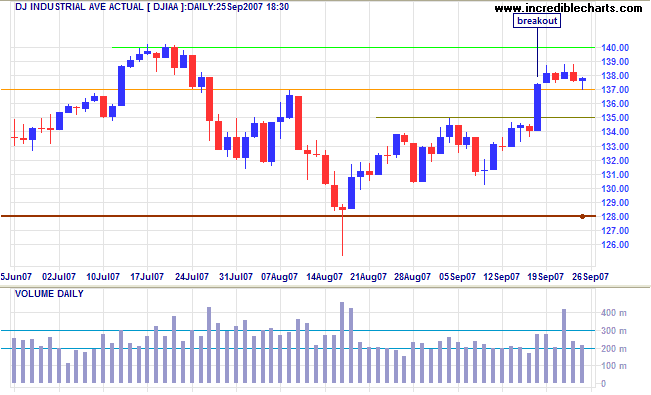
The Nikkei is consolidating below resistance at 16600. Rising Twiggs Money Flow signals accumulation and the ascending triangle indicates an upward breakout, which would signal a test of primary resistance at 18300. Until then, the primary down-trend continues.
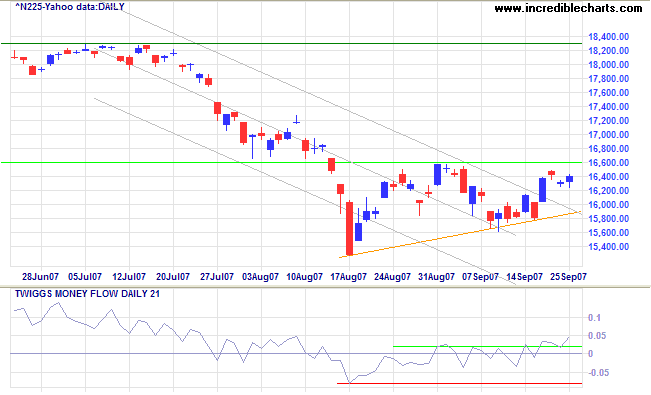
The FTSE 100 follows a similar path to the Dow. Breakout above 6400 indicated that the correction has ended, but the index is now consolidating in a narrow rectangle. A further breakout above 6500 would signal a test of the earlier high of 6750, but a close below 6400 would signal weakness. The Australlian All Ordinaries established a new all-time high, but investors remain cautious, with low volume and a doji candlestick signaling indecision.
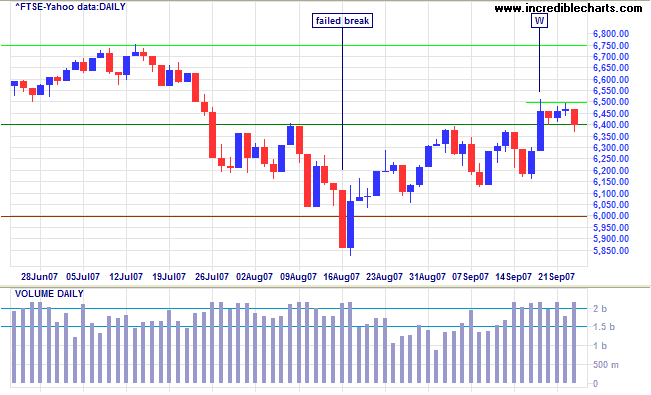
The Hang Seng remains bullish, but the Shanghai Composite is losing momentum. The index failed to recover above the lower border of the trend channel and Twiggs Money Flow displays a bearish divergence.
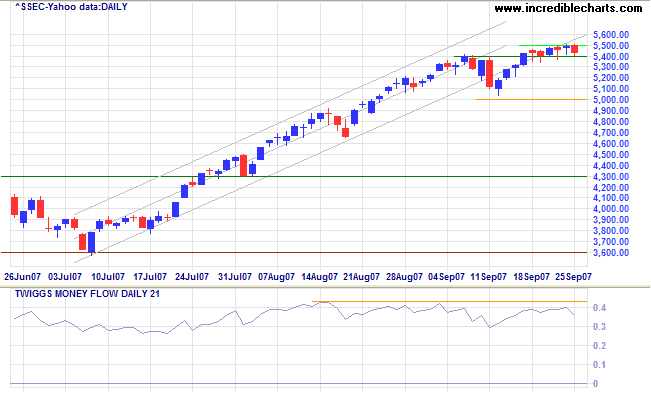
Wright Model
Probability of recession in the next four quarters eased to a low 25 per cent according to the Wright Model. The model fairly accurately predicts recessions caused by a contraction of the money supply, but I suspect that it may not be as reliable in identifying the mischief caused by artificially low interest rates.
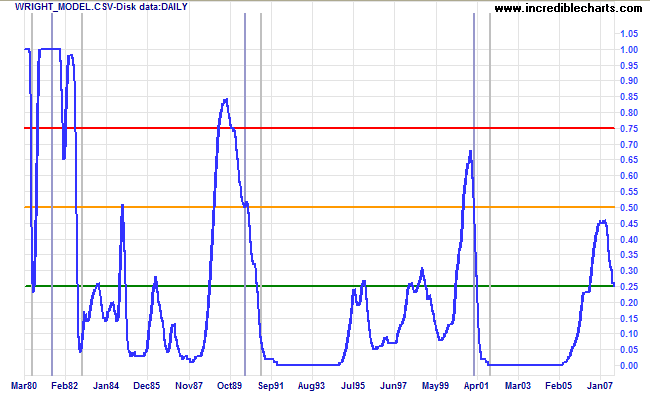
The year's best-performing funds do the best on the last day of
the year, and the worst on the following day.
~ David Musto, Professor of Finance, Wharton
To understand my approach, please read Technical Analysis & Predictions in About The Trading Diary.

Author: Colin Twiggs is a former investment banker with almost 40 years of experience in financial markets. He co-founded Incredible Charts and writes the popular Trading Diary and Patient Investor newsletters.
Using a top-down approach, Colin identifies key macro trends in the global economy before evaluating selected opportunities using a combination of fundamental and technical analysis.
Focusing on interest rates and financial market liquidity as primary drivers of the economic cycle, he warned of the 2008/2009 and 2020 bear markets well ahead of actual events.
He founded PVT Capital (AFSL No. 546090) in May 2023, which offers investment strategy and advice to wholesale clients.
